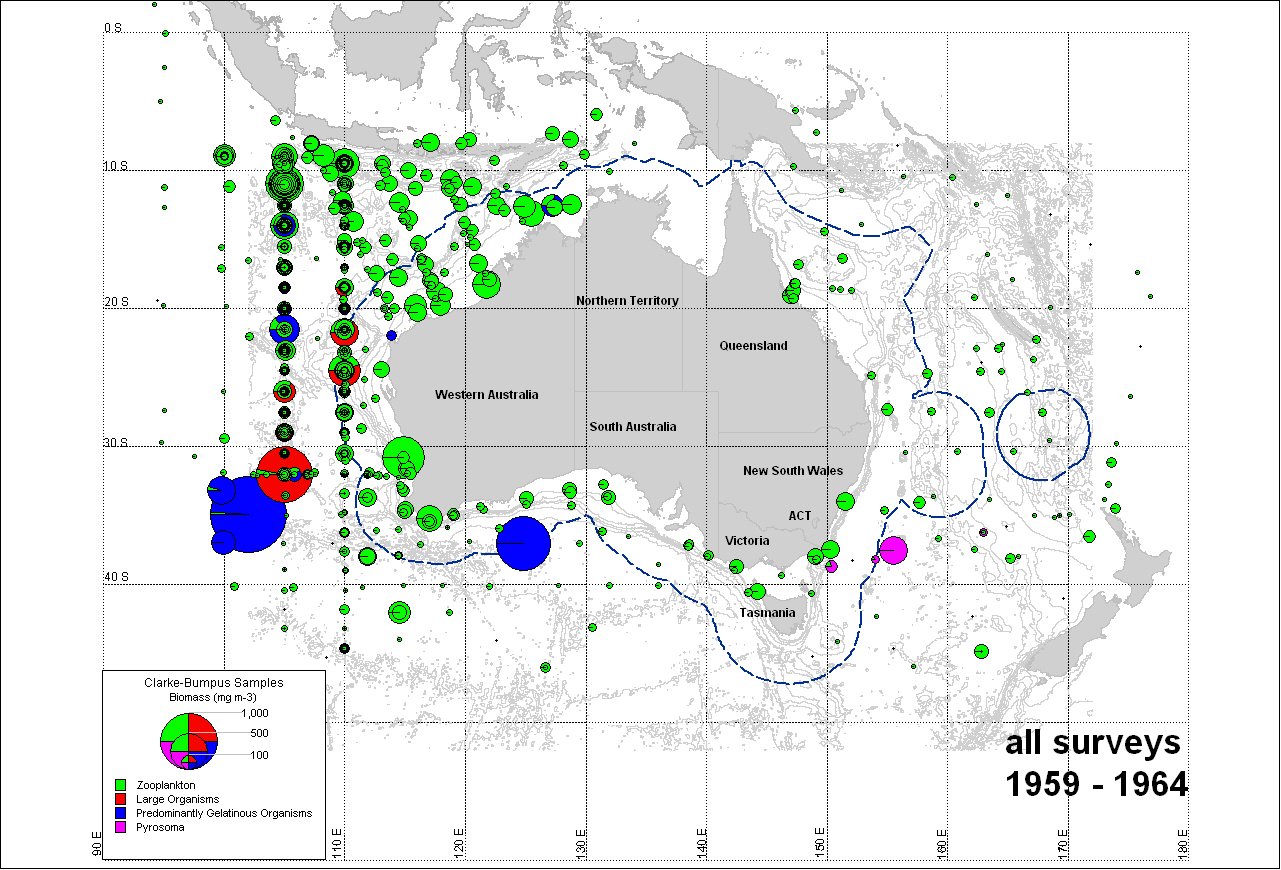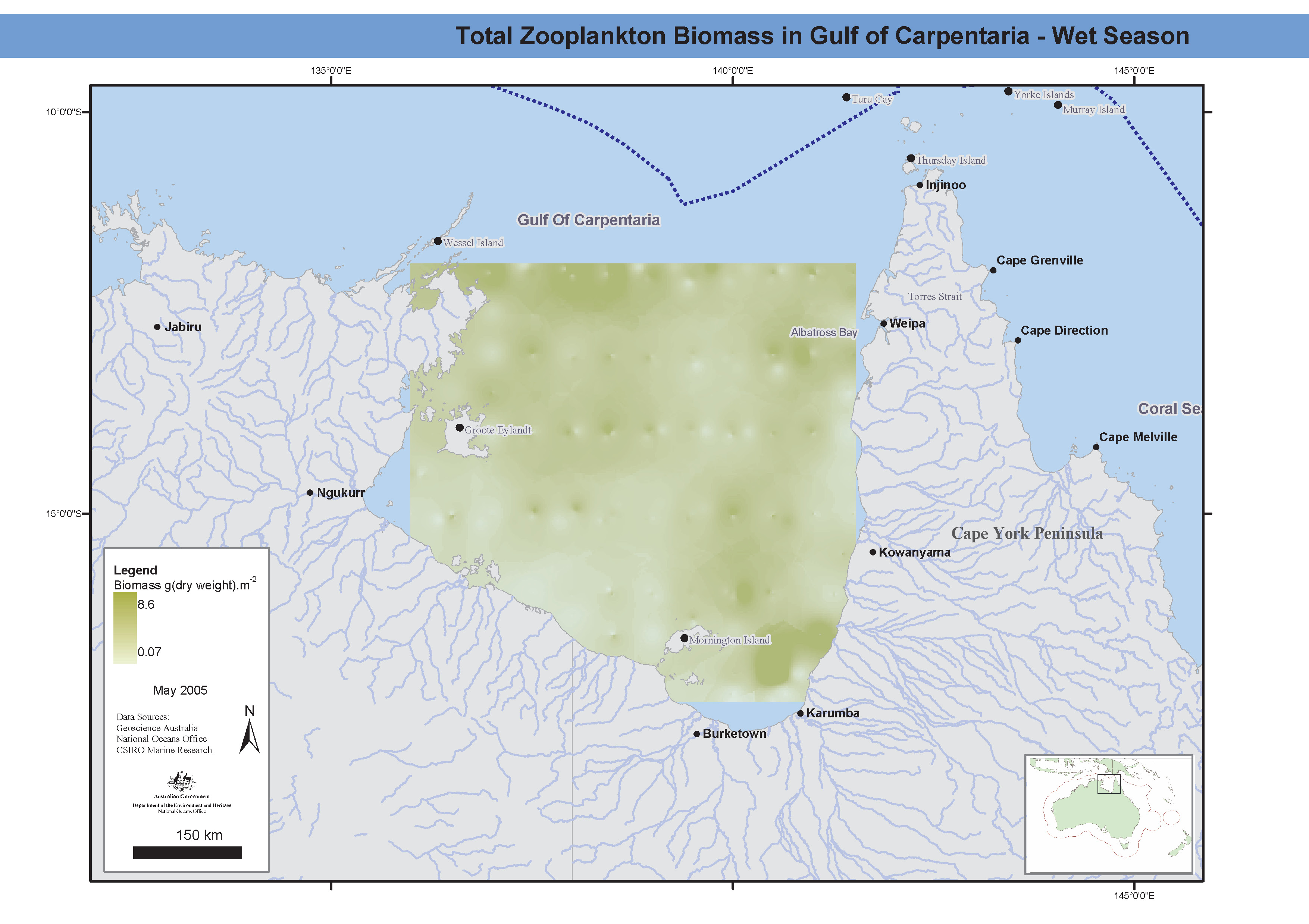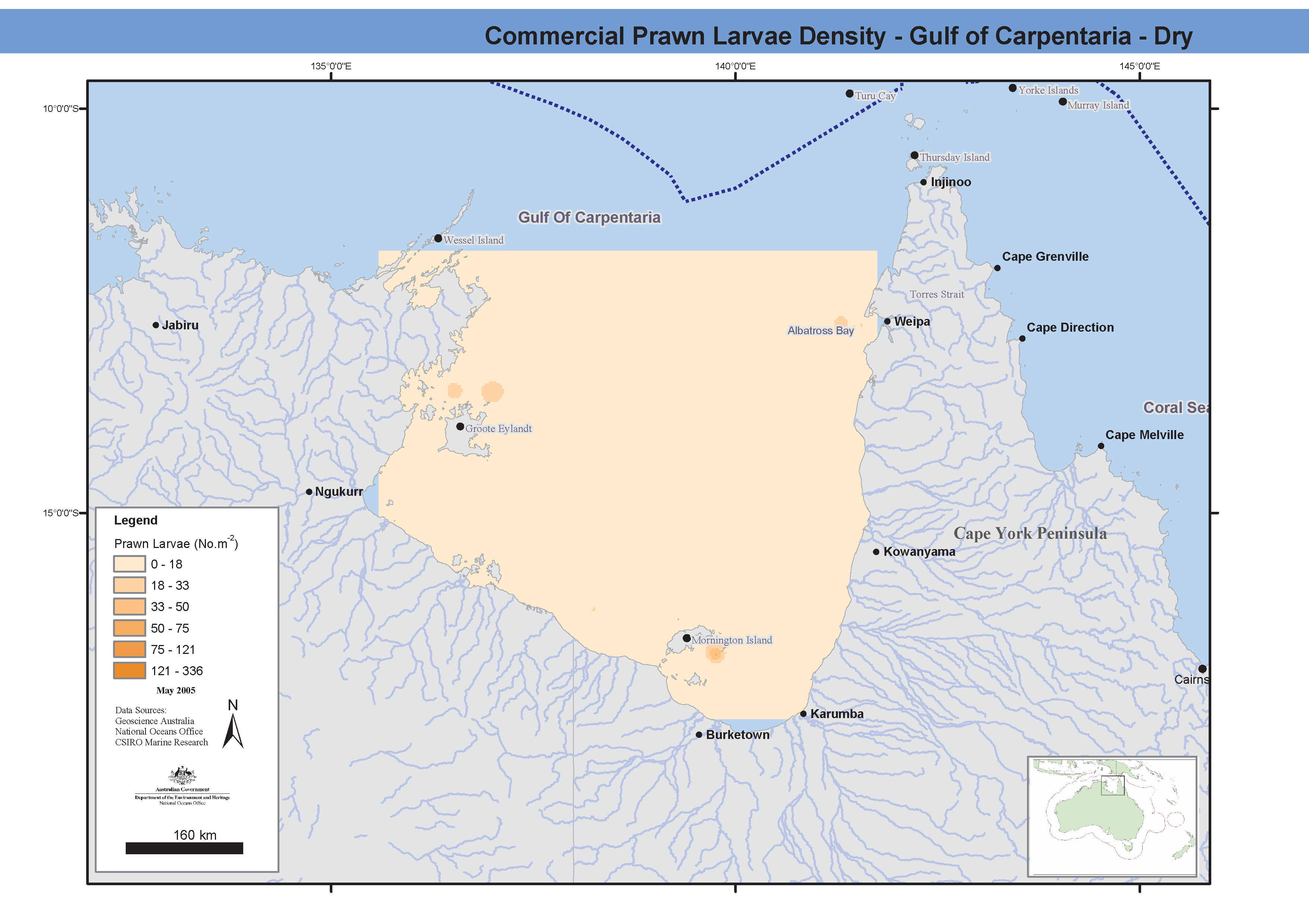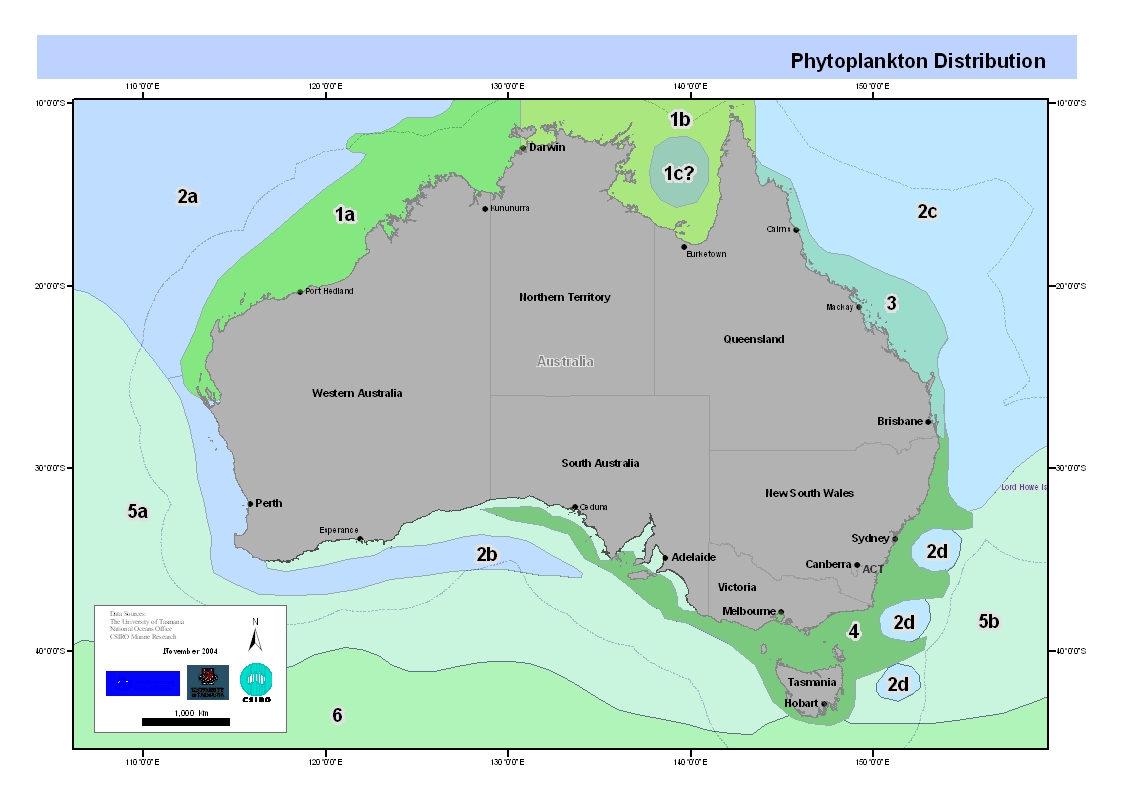Keyword
Earth Science | Biosphere | Ecological Dynamics | Ecosystem Functions | Food-Web Dynamics
87 record(s)
Type of resources
Topics
Keywords
Contact for the resource
Provided by
Years
Formats
Update frequencies
Status
draft
-

Pilbara Marine Conservation Partnership (PMCP) surveys of stable isotope ratios and concentrations of important elements in the tissues of primary producers and consumers. The data include: * Stable isotope ratios (d15N and d13C) of muscle tissue of selected species of fishes, of leaves of seagrasses and mangroves, and of thalli of macroalgae * Concentrations of nitrogen and carbon (%N and %C) and C:N ratios for the same samples. These data are an output of the Pilbara Marine Conservation Partnership (PMCP) Coral Reef Health Theme.
-

Map of zooplankton biomass in Australian waters. Data collected from oceanographic surveys conducted between 1959 and 1964 onboard the vessels "Gascoyne" and "Diamantina" using a Clarke-Bumpus Oblique Haul, with zooplankton biomass expressed in milligrams per cubic metre. These maps have been produced by CSIRO for the National Oceans Office, as part of an ongoing commitment to natural resource planning and management through the 'National Marine Bioregionalisation' project.
-
ESRI grids showing phytoplankton provinces around Australia. The information was supplied by Dr Gustaaf Hallegraeff, of the University of Tasmania in 2004 as an update of the Jeffrey/Hallegraeff 1991 phytoplankton map. Variations in onscreen colour representation or printed reproduction may affect perception of the contained data.
-
Zooplankton biomass point data that has been mapped using MapInfo along 110ºE, Indian Ocean using a standard net (samples from return-trips along the 110ºE latitude line were shifted to 105ºE). These MapInfo layers have been produced by CSIRO for the National Oceans Office, as part of an ongoing commitment to natural resource planning and management through the 'National Marine Bioregionalisation' project. Variations in onscreen colour representation or printed reproduction may affect perception of the contained data.
-

Maps of total zooplankton biomass (dry weight) from stepped oblique bottom to surface plankton tows from Albatross Bay. Biomass estimates from two mesh sizes. These maps have been produced by CSIRO for the National Oceans Office, as part of an ongoing commitment to natural resource planning and management through the 'National Marine Bioregionalisation' project.
-
Between March 1986 and April 1992, monthly cruises were carried out at 21 stations in Albatross Bay, Gulf of Carpentaria. Prawn larval densities were measured and salinity-temperature profiles taken. Prawn larval density from stepped oblique bottom to surface plankton tows. Net sizes were 142 or 140 m mesh, 250 micron mesh with a 0.5 x 0.5 metre square frame, stepped-oblique tow. In this dataset Penaid prawn counts were recorded to genus level for all larval stages.
-

Maps showing prawn larval distribution of commercial prawn species during both the wet and dry seasons in Albatross Bay. The data was recorded from stepped oblique bottom to surface plankton tows, 140-142um nets. Nine cruises took place between 1975 and 1977 on chartered boats and the "Kalinda". Prawn larval biomass and densities were measured in several transects across the Gulf of Carpentaria, as well as total plankton biomass. These maps have been produced by CSIRO for the National Oceans Office, as part of an ongoing commitment to natural resource planning and management through the 'National Marine Bioregionalisation' project.
-
26 cruises between 1986 and 1988 recorded the biomass and species composition of tropical zooplankton in Albatross Bay, Gulf of Carpentaria, Northern Australia. The initial data analysis was undertaken by Graham J B Ross between 20 November and 15 December 1999, where a significant number of errors, of various types where discovered and correction made. See attached metadata record REPORT.TXT. Zooplankton taxonomic groups were identified to species level where possible (from m6332.xls), with a primary focus on copepods, to produce the ESRI shape layer and m6332_copepods.xls. Data is stored as mean number of individuals per site. Sampling occurred across 5 sites (Site 1 = Inshore, Site 5 = Offshore, Sites progressed westward). Temperature and salinity were also recorded for many samples.
-

This dataset is a digitised version of an updated map of phytoplankton bioregions around Australia prepared by Dr Gustaaf Hallegraeff, of the University of Tasmania for the National Oceans Office, as part of the 'National Marine Bioregionalisation' project. It is an updated version of the map previously published Jeffrey & Hallegraeff in 1991 and is based on the original data which was collected by plankton nets and water bottle sampling, using light and electron microscopy for species identification, augmented by additional phytoplankton data collected in the period 1990-2004.
-

Fish and shark assemblage data are being obtained from the analysis of Stereo-BRUV footage captured in May 2014. Data is comprised of raw camera output stream files (.MTS) for 272 Stereo-BRUV drops in shallow water (~10m) between Exmouth and Dampier, Western Australia. Files are less than 1.9GB and total approximately 10TB. Videos are structured within Stereo-BRUV drops (identified with an OpCode i.e. NCB1-NCB272) with a left and right camera folder within each drop. Videos are lodged with the iVEC Data Store - https://data.ivec.org The Pilbara Marine Conservation Partnership (PMCP) was an initiative designed to enhance the net conservation benefits of the globally-significant coral reef ecosystems of the Pilbara (Western Australia) by providing an assessment of the condition and trajectory of key ecological values. These assessments were designed to inform and complement existing governance and management arrangements and the PMCP is intended to provide ongoing advice and assessment for conservation efforts in the region, providing lasting benefits. The PMCP concept is based on three core ecological components, namely: Coral Reef Health - concentrating mainly on habitat forming primary producers. Fish and Sharks - their community structure, interactions and impacts on lower trophic levels. Environmental Pressures - physical and anthropogenic factors that influence the condition of reefs and associated biota.
